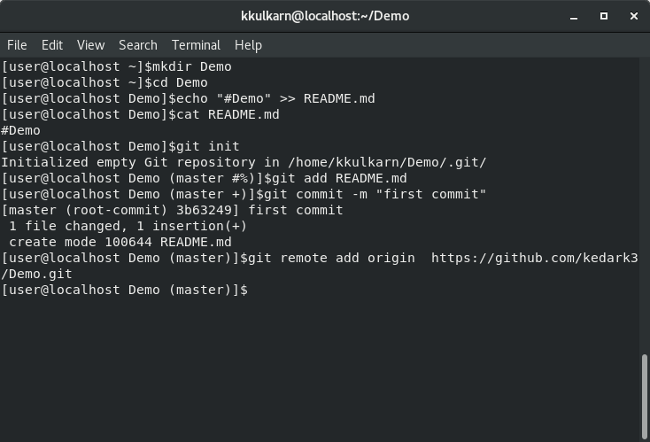

For this task, we must use the tag “ cached“ $ git rm -cached wrong.txt Now, let’s remove the “wrong.txt” file only from the remote repo. $ git commit -m "pushing the wrong.txt file again" We will repeat the process again by creating the “ wrong.txt” file, where at this time we will delete it from the remote repo only.
Git add remote how to#
How to Delete the File from the Remote Git Repo but Keep it Locally $ git commit -m "remove the wrong.txt file"Īs we can see, the file has been removed from both the local file system and remote repository. Then we should run the following commands. Now, let’s say that we want to delete the file from both the remote directory and the local file system. The “wrong.txt” file has been added to the remote repository. $ git commit -m "pushing the wrong.txt file" Now we will create a file called “wrong.txt” that we will push to the remote repo. Then we change the working directory to the cloned repository and as we can see there is the README.md and the.
With -tags option, git fetchGit add remote update#
The command git fetchAs usual, we will work with walk-through examples.

Commit the file that you've staged in your local repository.To unstage a file, use 'git reset HEAD YOUR-FILE'. For example, to add a remote origin to your repository, you would use the command like this: git remote add origin :scottwrobinson/camo. # Adds the file to your local repository and stages it for commit. You can also set these remotes as your default push or pull locations, shortening your Git commands even more. Stage the file for commit to your local repository.Change the current working directory to your local repository.On your computer, move the file you'd like to upload to GitHub into the local directory that was created when you cloned the repository.Sensitive information can include, but is not limited to:įor more information, see " Removing sensitive data from a repository." Warning: Never git add, commit, or push sensitive information to a remote repository. You can upload an existing file to a repository on using the command line. For more information, see " Creating a pull request."Īdding a file to a repository using the command line If your current branch is the default branch, you should choose to create a new branch for your commit and then create a pull request. For more information, see " Creating a commit with multiple authors."īelow the commit message fields, decide whether to add your commit to the current branch or to a new branch. You can attribute the commit to more than one author in the commit message. You will then be prompted to 'Enter a file in which to save the key. This command will create a new SSH key using the email as a label. ssh-keygen -t rsa - b 4096 -C 'youremail example. execute the following to begin the key creation. In the "Commit message" field, type a short, meaningful commit message that describes the change you made to the file. The process for creating an SSH key is the same between them. To select the files you want to upload, drag and drop the file or folder, or click choose your files. Alternatively, you can drag and drop files into your browser. On, navigate to the main page of the repository.Ībove the list of files, select the Add file dropdown menu and click Upload files. For more information, see " Committing and reviewing changes to your project in GitHub Desktop." You can use GitHub Desktop to move your changes to a new branch and commit them. For more information, see " About protected branches." If a repository has any protected branches, you can't edit or upload files in the protected branch using GitHub.You can upload multiple files to GitHub at the same time.


 0 kommentar(er)
0 kommentar(er)
